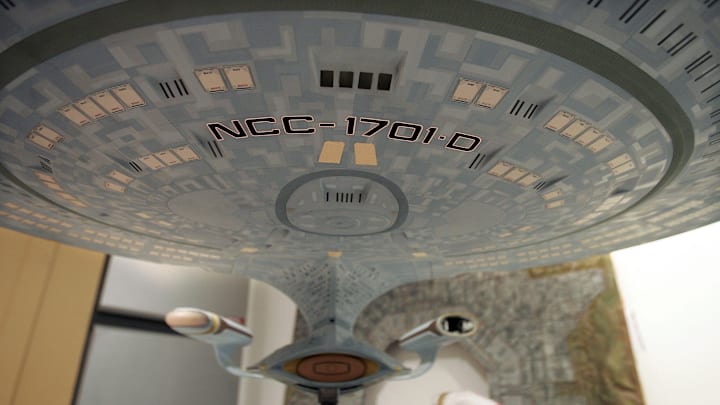Starships in Star Trek are often oddly designed. They're not exactly conventional looking, at least as far as we see actual spaceships that mankind has designed and made. They're more obscure and unique. They have a style that is all Star Trek's very own.
Due to that originality or perhaps because of it, the ships have some unique facets that often go forgotten about. For instance, some ships have a saucer section that can detach itself from the rest of the ship. Thus creating two distinct and unique ships from one.
It's a pretty cool thing to see, due to how rare it is to see it. So much so that ScreenRant recently talked about it. In fact, they reminded all of us of this idea. Going on to reveal that we've only ever seen it be used three times across the franchise's history.
The article takes the stance that it's probably best that they don't do this often, as Starfleet vessels work best as a singular unit and they're right to say that.
When the ship detaches its saucer, you do have two distinct ships, but you also have half, if not less, of the ship's abilities. Phasers have to draw power from somewhere and it's usually the energy that the ship's core produces. Though, not directly from. So when the ships detach, the saucer, in theory, would only have a finite amount of energy to not only fire phasers but fly as a whole.
That thing isn't going to hit warp anytime soon without its lower half. Also, while the lower half has the warp core, usually, it also doesn't have the same guidance system that the saucer has. The saucer has the command bridge, filled with all sorts of systems that not only help the ship operate but navigate as well.
Sure, there are spare command centers in the lower half, but they aren't designed to be as comprehensive. They're scaled back due to their status as a "last resort". See, the ships only detach the way they do when things have gotten so bad that it's the only move left on the table.
Or, if they're trying to avoid a disaster. The scene that best reflects when and how the saucer should be used is from Star Trek Generations. In it, the lower section of the U.S.S. Enterprise-D is on the verge of exploding, so everyone is evacuated into the saucer portion of the ship. Then they detach, allowing their lower half to explode, and the saucer to serve as a massive lifeboat of sorts as it crashes into the planet below.
The movie ended up destroying the Enterprise-D, a move that was made for non-storyline purposes. The Enterprise-D model was too hard to shoot with when making movies. There was an aspect ratio difference that wasn't conducive for the ship on film, as opposed to television. So a new ship, the U.S.S. Enterprise-E was created and debuted in Star Trek: First Contact.
So knowing the ship was having its last hurrah, they sent it off in a spectacular moment. That is, until Star Trek: Picard just had to ruin it by bringing it back for no reason in season three's finale.
As a whole, it's a gimmick that looks cool, but in any actual sense, would spell certain doom if you allowed it to happen too often. Twice the ship means half the efficiency. It's best as an emergency lifeboat situation.
